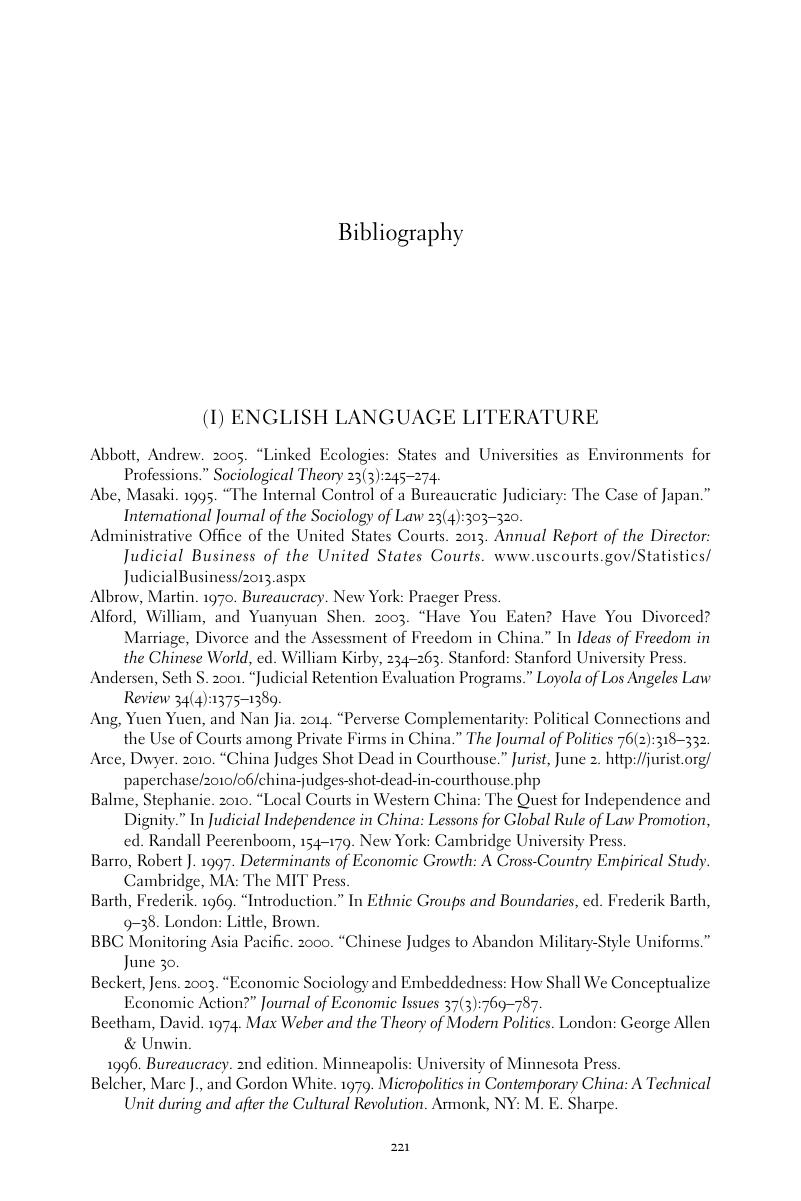Book contents
- Embedded Courts
- Embedded Courts
- Copyright page
- Contents
- Preface and Acknowledgments
- 1 Chinese Courts as Embedded Institutions
- 2 The Daily Rounds of Frontline Judges
- 3 Cohorts of Judges
- 4 Administrative Embeddedness: The Vertical Hierarchy of Control
- 5 Political Embeddedness: Courts as Stability Maintenance Agencies
- 6 Social Embeddedness: Ties from Within and from Without
- 7 Economic Embeddedness: The Political Economy of Court Finances
- 8 Conclusion
- Methodological Appendix
- Notes
- Bibliography
- Index
- References
Bibliography
Published online by Cambridge University Press: 20 October 2017
- Embedded Courts
- Embedded Courts
- Copyright page
- Contents
- Preface and Acknowledgments
- 1 Chinese Courts as Embedded Institutions
- 2 The Daily Rounds of Frontline Judges
- 3 Cohorts of Judges
- 4 Administrative Embeddedness: The Vertical Hierarchy of Control
- 5 Political Embeddedness: Courts as Stability Maintenance Agencies
- 6 Social Embeddedness: Ties from Within and from Without
- 7 Economic Embeddedness: The Political Economy of Court Finances
- 8 Conclusion
- Methodological Appendix
- Notes
- Bibliography
- Index
- References
Summary

- Type
- Chapter
- Information
- Embedded CourtsJudicial Decision-Making in China, pp. 209 - 220Publisher: Cambridge University PressPrint publication year: 2017



